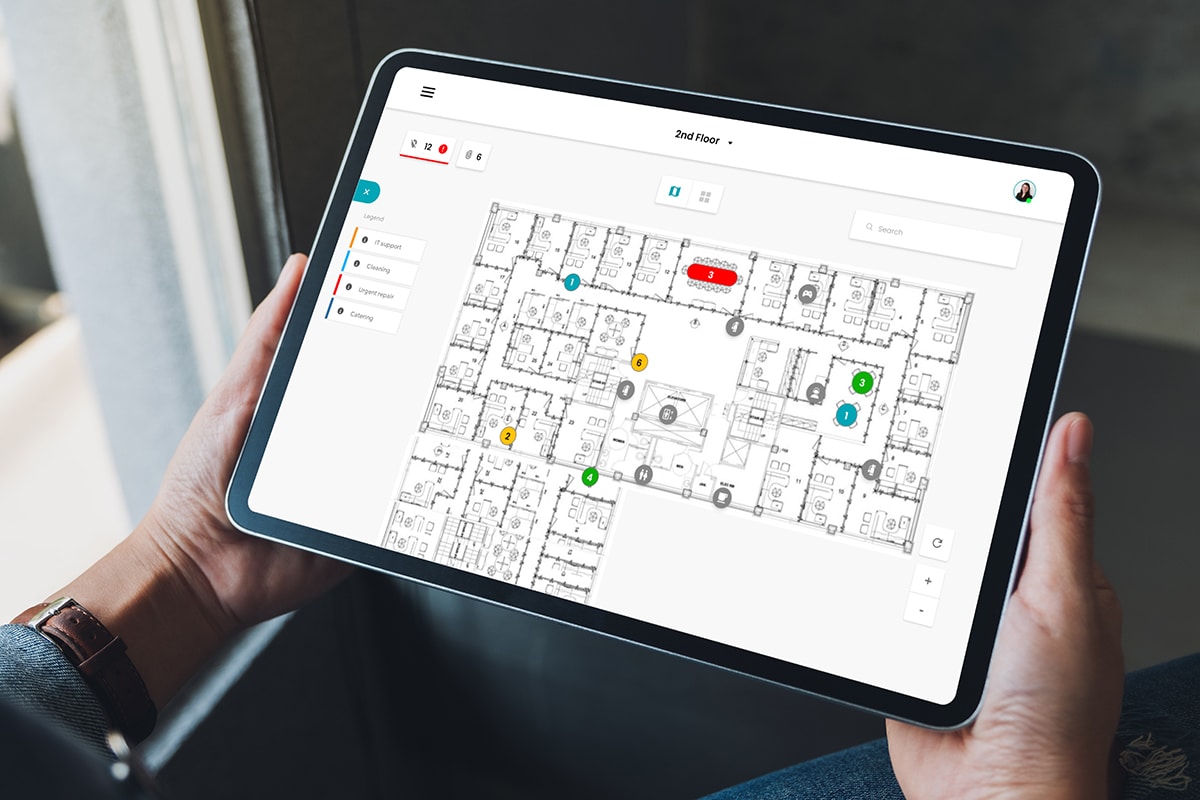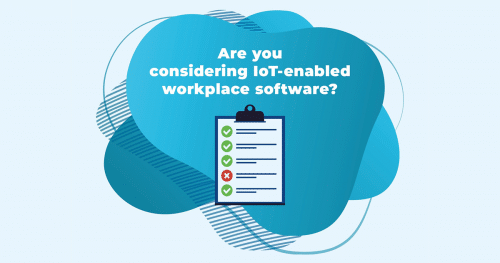The employee experience in the (hybrid) workplace is a hot topic these days. Our experience at work is largely determined by our coworkers, job content, and the environment we work in. But workplace services also play an important role in providing a great employee experience.
Although human skills remain essential in delivering good service, software tools can streamline the process, make it more efficient and reduce costs. In addition, the use of sensor data can make workplace services more dynamic and better targeted, so that they are delivered when and where it matters most. In this blog post, we will take a closer look at how the IoT can help create more dynamic workplace services.
The importance of workplace services and amenities
77.2, that’s the percentage of employees globally who rank tea, coffee and other refreshment facilities as an important workplace feature, according to 2021 data from Leesman, a company that specializes in measuring the workplace experience. A high score – higher than the importance given to noise levels, for example. Surprising? Not so much. In any case, it’s a clear illustration of the importance employees attach to workplace services. But although we tend to take things like good coffee and clean office toilets for granted, they require daily oversight.
Managing workplace services with integrated workflows
The backbone for running efficient, performance-driven facility operations and services is IWMS software (Integrated Workplace Management System). Such a system is usually modular and integrated across different domains (e.g., reservations, space management, service management, contracts, maintenance, property management). That means you can start small and extend the system as your organization evolves. When you add extra IWMS domains these will be natively integrated with what you’re already using (a key advantage compared to point solutions). With a well-integrated IWMS, you manage everything in one place (“single source of truth”) and related processes are connected. So, when a technician uses spare parts at a client site, maintenance stock levels will be automatically adjusted. And when a pre-set threshold is reached, these parts will automatically be reordered. The time spent by the technician on a job is also tracked and used for invoicing. And a mobile app enables field teams to access all relevant information remotely and manage their work on the go.
Dynamic workplace services
Sensor data can enhance building and workplace services in a variety of ways. From cleaning and maintenance, to catering and equipment provisioning. Sensors can be implemented to support a single use case. For example, door count sensors in bathrooms that trigger cleaning. Sensors can also be used to enable multiple scenarios. For instance, occupancy sensors in meeting rooms. While they serve primarily to gain insight into space usage and help workers easily find free rooms, the data derived from them can also be used to optimize cleaning. By adjusting cleaning frequencies based on usage trends, for example, or to generate an automatic work order when a room is vacated after a meeting. Or even to skip cleaning altogether when the room has not been used – saving time and supplies, while freeing cleaners for other tasks. To make this practical, cleaners receive a digital device that shows work orders on digital floor plans. An example of this is AZMM hospital, which equipped its 100+ cleaning team with digital tablets (attached to cleaning carts for convenience) running a smart service app. Eliminating paper, this new way of working increased the team’s cleaning capacity and motivation, reduced annual cleaning costs, and even facilitated a faster COVID-19 response.

Enhancing resource allocation with utilization insights
While IWMS provides the foundation for efficient, cost-effective service delivery, an IoT platform offers additional insights on utilization. The actual usage of a building is constantly evolving and is often different from what we imagine. These days, with a lot of uncertainty around post-pandemic office utilization, this is even more the case. And until workplace leaders understand how different employees will use the office in the new workplace landscape, it is hard to know what to adjust. Reliable, up-to-date information on how a building is used is, therefore, more critical than ever for smart decision-making. Obviously, sensors are much better than humans in objectively tracking occupancy and utilization. Data-driven insights visualized on floor plans and dashboards are essential not only to right-size the office footprint and optimize its configuration, but also to successfully plan agile workplace services in a changed office environment. And to be able to react quickly to changing conditions, as in the case of AZMM discussed above. During the successive COVID-19 waves, AZMM’s cleaning team received frequent updates on their digital devices. They could instantly see on color-coded floor plans which zones were off limits. And to further keep them safe, they also got custom work orders with tailored safety, hygiene, and sanitization procedures.
Improving responsiveness with real-time data
Building sensor data enhances our insight into broad usage patterns. That way it helps us adjust service schedules and optimize resource planning. But sensor data can also drive more responsiveness in real time. For example, when sensors capture temperature or humidity values outside the normal range, the platform can trigger a work order in the IWMS for checking the HVAC. Through rules set up in the software, automated alerts are sent to the correct maintenance service provider. This will lead to faster incident resolution and may even pre-empt complaints.
Another example is smart cleaning. If sensors detect that a meeting has ended early, the platform can send a task to a cleaner’s mobile so that the cleaned room becomes available more quickly. Conversely, if nobody showed up, the cleaner is notified that the work order doesn’t need to be filled, saving time and supplies.
For catering, footfall sensors can provide useful information to adjust the number of meals and serve the freshest food possible. People counting sensors can also show how long the line is, so that people can spread out their visit to the cafeteria. This not only saves employees time waiting in line, but also avoids the need to bring in extra catering personnel to cope with peaks.
The bigger picture
As the use cases above suggest, sensor data can drive smarter asset maintenance and more dynamic workplace services. While the benefits are clear, service provision is usually not the driving force for adding IoT connectivity to an IWMS. However, when you have already adopted an IoT platform for other use cases (space optimization is undeniably the number one in the market), it makes a lot of sense to leverage the platform to enable more dynamic workplace services, too.
Don’t hesitate to contact us to explore how IoT-connected software can benefit your business.











